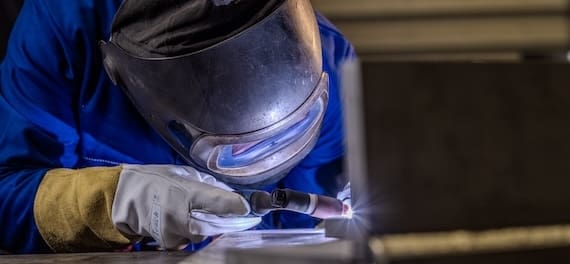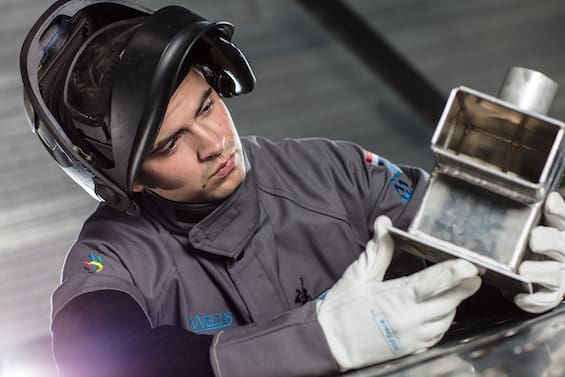
Comparison of welding processes: TIG and MIG welding
Welding is an essential technique in metalworking and construction. Two commonly used welding techniques are MIG and TIG welding, but there are significant differences between MIG and TIG welding that influence their applications and results. Where we previously wrote about the difference between MIG and MAG welding, in this blog, we dive deeper into the difference between MIG and TIG welding and the associated welding clothing.
What is TIG welding?
The meaning of TIG is literally Tungsten Inert Gas. Tungsten is used as the electrode in this welding technique. And just like in MIG welding, inert shielding gas is used. TIG welding belongs to the category of ‘electric arc welding’. A non-melting tungsten electrode creates the welding arc, while an inert gas is used to protect the weld area from contaminants.
TIG welding for high accuracy
TIG welding is considered one of the most difficult welding techniques but is also known for its precision and versatility. Because the heat input is very well controlled, welders can produce very precise and well-finished welds. This is why TIG welding is often chosen in situations where precision is of great importance, such as when welding thin materials, stainless steel, and aluminium. An advantage of TIG welding is that there are hardly any welding spatters or sparks emitted during the welding process. The ability to weld different metals with minimal distortion and spattering makes TIG welding excellent for high-quality welding projects where aesthetics and quality are essential.
Difference between MIG and TIG welding
The most noticeable difference between MIG and TIG welding lies in how welding wire is added. With MIG welding, this is done automatically from the welding torch, whereas with TIG welding, the filler wire has to be manually fed into the weld pool. TIG welding therefore requires two hands continuously. Another difference is the use of constant amperage in the TIG welding process, as opposed to constant voltage in MIG/MAG welding.
Additionally, the welding techniques also differ in welding speed and weld quality. The major advantage of MIG welding is its high welding speed, making the process significantly faster. On the other hand, TIG welding produces higher weld quality.
Which gas for TIG welding?
In TIG welding, 100% Argon is typically used as the inert shielding gas, just like for MIG welding of aluminium. This type of shielding gas creates a stable arc and effectively protects the weld from oxidation. Argon has the property of maintaining a clean environment during the welding process, making it particularly suitable for welding non-ferrous metals, such as aluminium and stainless steel. Argon is also sometimes mixed with hydrogen, for example for TIG welding of corrosion-resistant steel.

Personal protective equipment for TIG welding
Personal protective equipment (PPE) plays an essential role in welding. Although TIG welding involves minimal sparks and glowing weld spatter, adequate protection is still required. With TIG welding gloves, you protect your hands and arms from the heat and radiation generated during welding. As a specialist in welding protection, Weldas offers various solutions for the TIG welder, including high-quality leather welding gloves and welding clothing.
Features of TIG welding gloves
A high-quality welding glove for TIG welding meets several important characteristics, including safety, comfort, ease of use, and health. Whereas MIG welding gloves are lined, this is not the case with the SOFTouch™ welding TIG gloves. Nevertheless, they can withstand a lot of heat thanks to the use of various types of leather. In TIG welding, finger sensitivity is crucial because the TIG welder must manually feed the welding wire. Therefore, it is important that TIG welding gloves provide excellent grip, allowing the welder to hold the welding wire and other small welding parts securely.
Additionally, precision is very important in TIG welding. To create good stability, the welder often leans on the workpiece being worked on. The longer cuff of the gloves for TIG welding allows the welder to rest his forearm on the workpiece. Another useful tool is the TIG finger heat shield. This TIG finger provides some extra material for support on hot surfaces, allowing the welder to maintain a stable hand position. The TIG finger is also sometimes used to support the melting electrode in electrode welding.
TIG welding clothing
In addition to TIG welding gloves, Weldas is also the right address for protective welding clothing, ranging from welding jackets to aprons, and from dungarees to foot protection. Our extensive range includes both high-quality leather welding clothing and comfortable flame-retardant cotton. View our entire range or contact us for advice.


